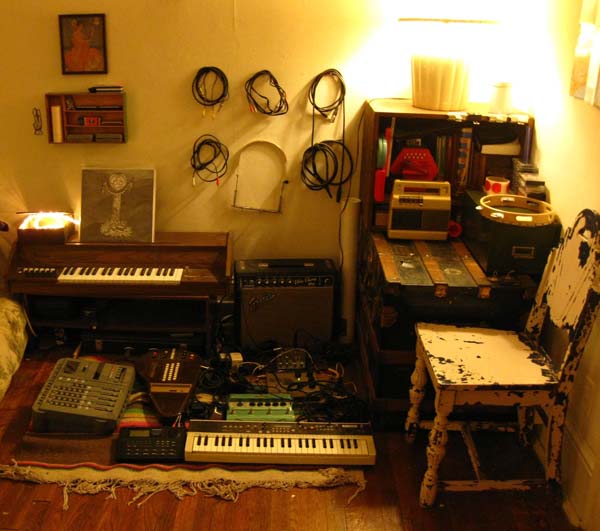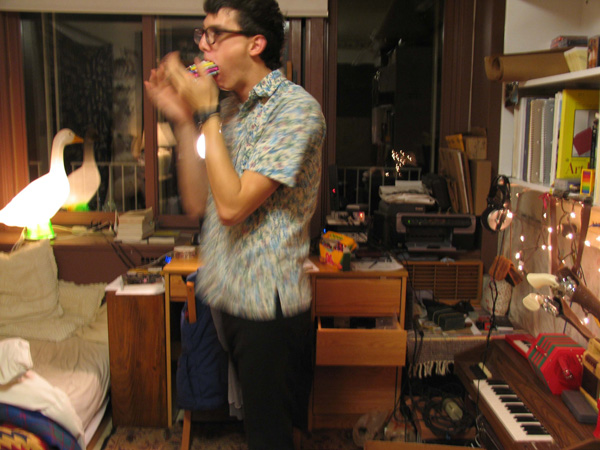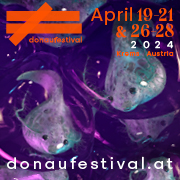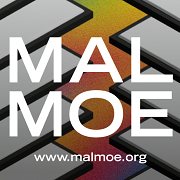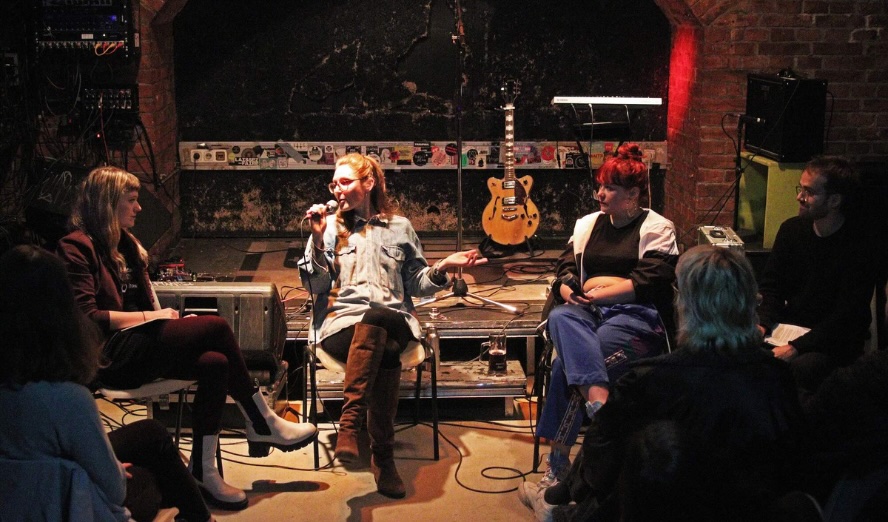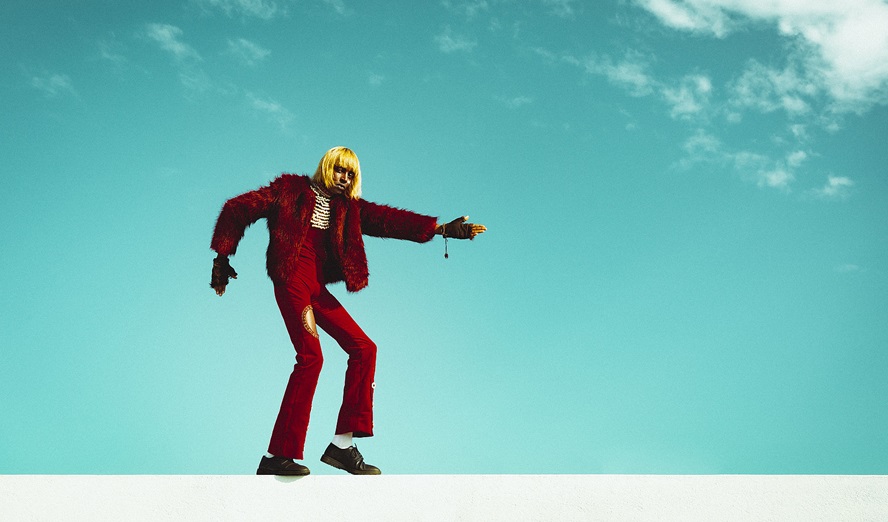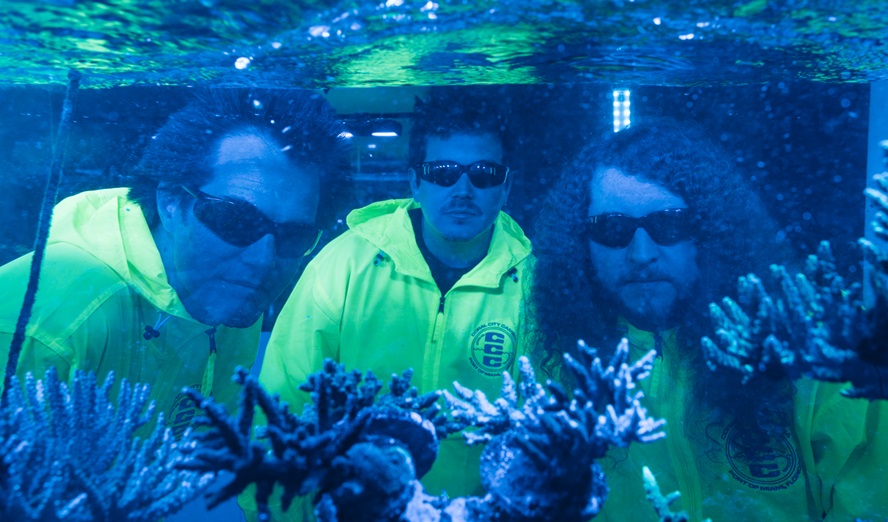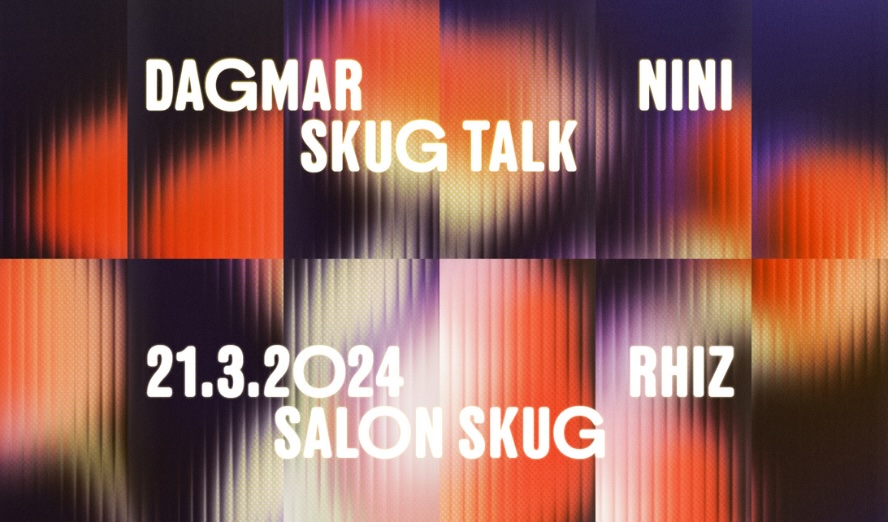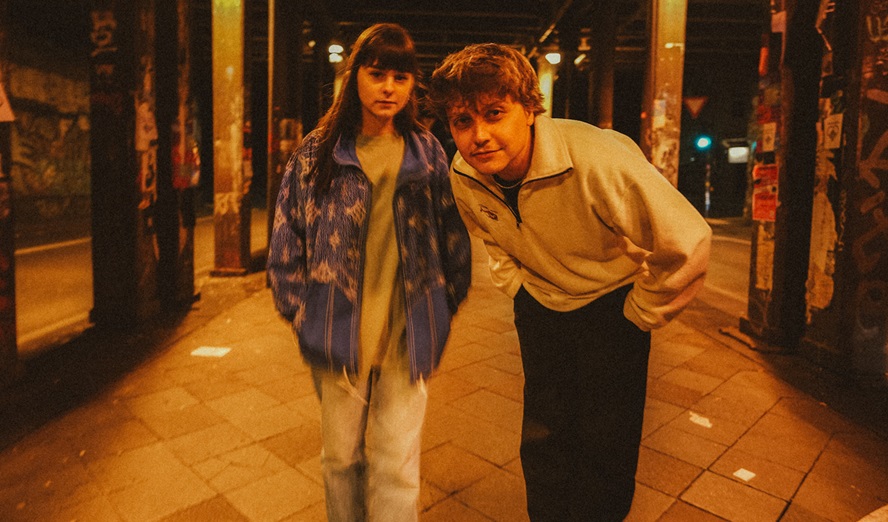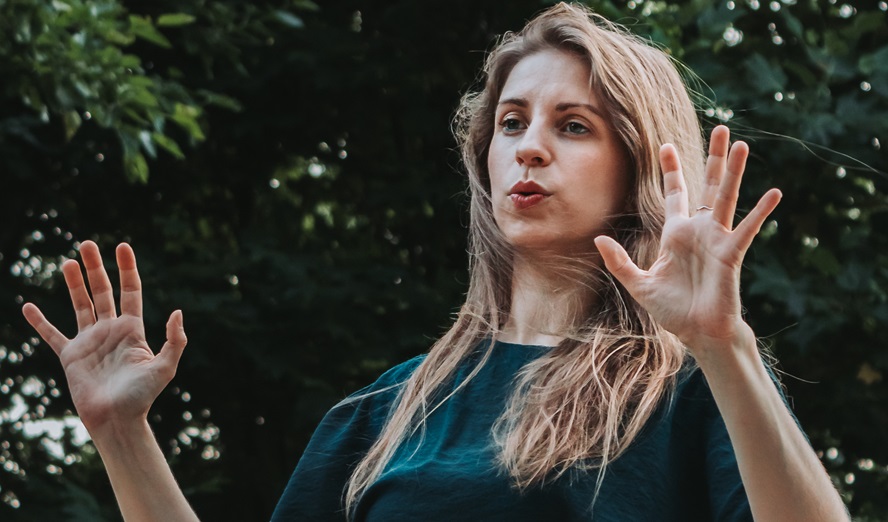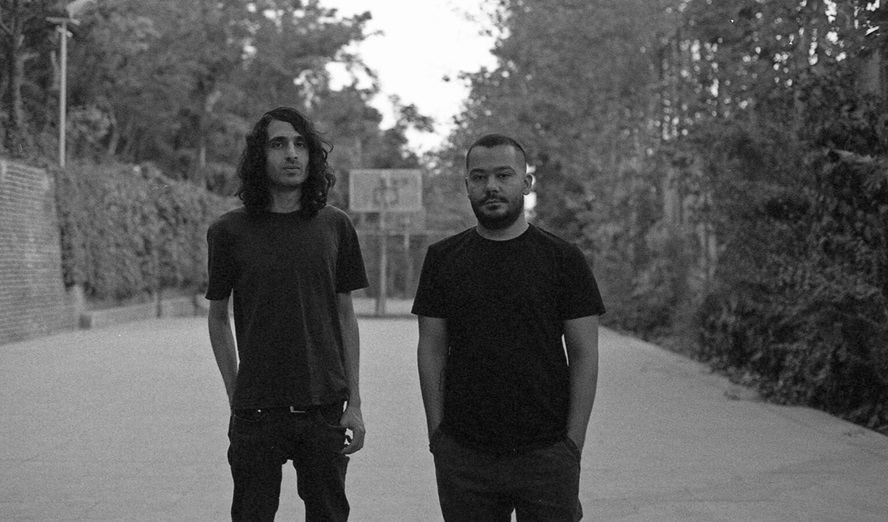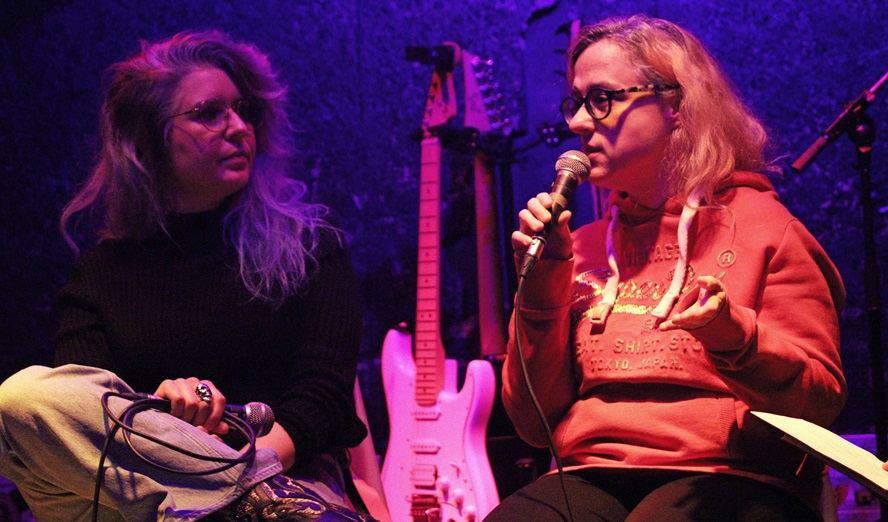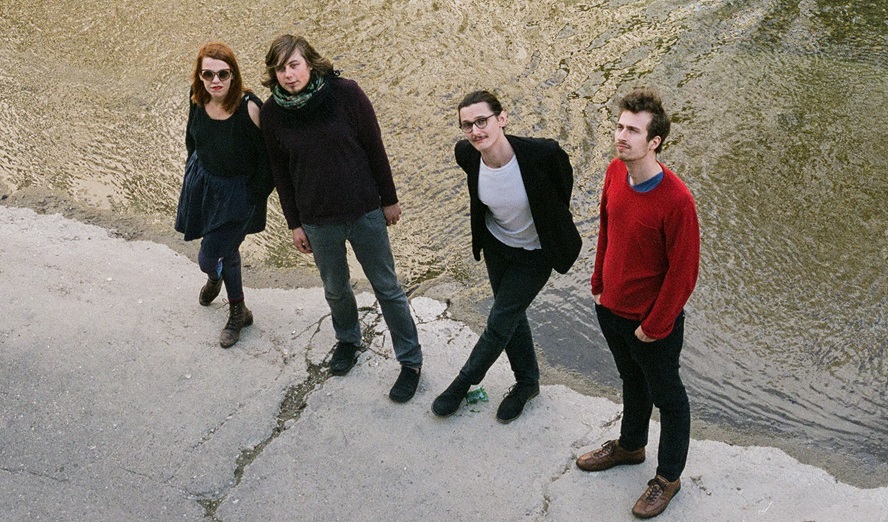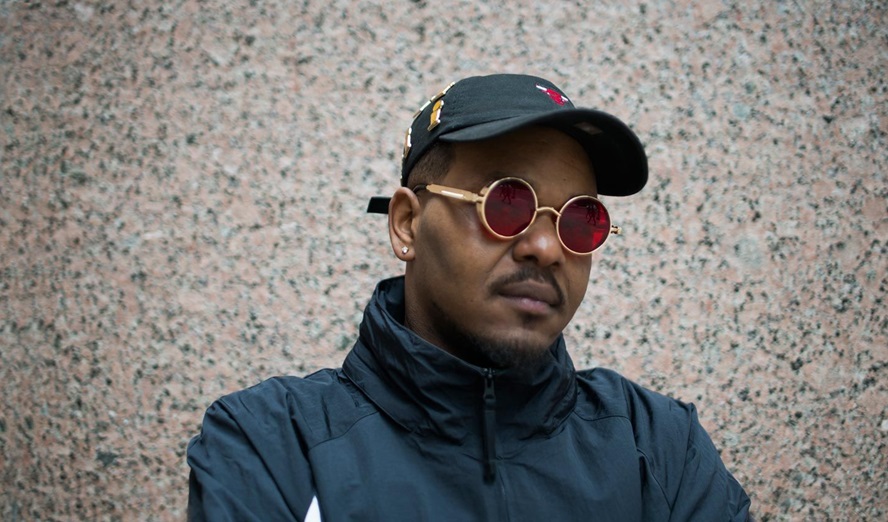skug: Goaty Tapes got my attention when I was in Glasgow last year. I was searching trough the tape section at the Volcanic Tongue shop (?cause tapes are still cheaper than CDs or vinyl) and almost all of the tapes I picked out were Goaty tapes because of the way they looked. So who does the art work for Goaty Tapes? Are you doing it yourself maybe?
Zully Adler: There have been a couple releases where I collaborated on the artwork with the band but most of the time the bands are willing to let me make the art on my own.
I think making the artwork gives some visual coherence to all the projects I work on. Despite the diversity of the bands, there are some essential elements that tie them together; a primitivism, intimacy, droll. I try to find some parallels in the artwork through imagery and especially in the ways I print the art. The letterpress, the etching press, old Xerox methods, all of these operations have parallels in the way that these bands embrace archaism and low-fidelity in their music.
Are you an educated graphic designer?
No, I don’t really have much formal training. I’m a history major in college and I love the history of design so I’m always looking at old posters, packaging, etc. But I try to avoid digital design techniques. I still work on my computer sometimes but I try to focus more of my design energy on hand-collage and printmaking.
A lot of the artwork contains imagery that refers too the late 70s and early 80s. Why this period specifically? Sweet childhood memories?
I guess I never really realized that my images carried that reference. I was actually born in the late 80s so I missed out pretty hard. It’s easy to find in old pictures a sense of nostalgia but I try to use images that don’t really carry specific historical references. I like the aging process of photos and other materials and so a lot of the time I use images that seem to have faded or corroded. I think it draws more attention to the physical nature of cassettes; it’s an almost aesthetic salute to the fact that cassettes age and decay.
Of course I had heard of Goaty Tapes before because I’m from Belgium and you released several tapes from Belgian musicians (Edgar Wappenhalter, Ignatz, Blobs). So what’s the link between you and Belgium?
I love Belgian bands. I feel like their mood is more casual and so they feel freer to goof around, experiment, or try something funny. And I identify with goofs. Belgian’s also seem particularly interested in collaboration; differences in genre or style aren’t enough to stop friends from working together.
Kommissar Hjuler is the only artist who released two records on Goaty Tapes. What do you like about his work?
I feel that Kommissar Hjuler and Mama Baer have a keen sense of their own artistic heritage. It’s obvious that they are interested in methods of deconstruction that go back to the Dada of Hugo Ball or Schwitters. But they also have a really fresh sense of how to deal with elements of German tradition in a playful and self-conscious way; Militarism, Dasein, Rootedness and anxieties about popular culture. I feel like it gets harder to find bands that don’t quite take themselves too seriously and K. Hjuler and M. Baer offer a more interesting criticism of culture by doing just that.
Why did you decide to start a tape label in the first place?
I started the label in high school, it just seemed like an interesting thing to try. I always wanted to try making some sort of packaging and the curatorial aspect of running a label sounded like fun.
I also really liked the projects of other cassette-makers; they had developed an arts community that seemed truly independent and a method of exchange that was reciprocal and self-generated. I liked how people were stimulated to make cassettes out of cooperation, not competition. 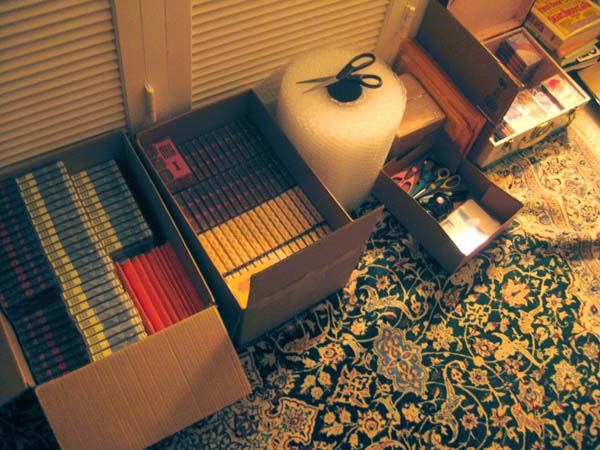
Maybe I should have started with this question: where does the name Goaty Tapes come from?
Goaty was the name of my best friend’s stuffed animal; a goat. She also had a pillow called Pilly so I had also thought about calling the label Pilly Tapes. I liked the name because it was unspecific but also had an aesthetic dimension. I always associated it with the dreamlike qualities of objects one remembers from childhood.
You also released one book: the Banana Head diaries. Why a book?
I like making books but most of the books I make are in editions that are too small to put on the website. All of them just go to friends or family. There have been two Banana Head diaries which I printed Xerox so I could afford to make enough of them to sell.
I don’t think that there is much that separates the books from the tapes. Of course, only the tapes have music but I think both of them have a particular presence as objects. They’re manufactured in a similar way. They’re intimate and hand-made but also reproductions. I think that’s what gives both books and tapes real significance today: they can offer an alternative to commercial production without reverting to operations that are too labor-intensive or old-fashioned.
Finally: I could be wrong here, but wasn’t Goaty Tapes originally a New York based label?
No, I actually started the label in Los Angeles but I lived in New York briefly. Now I’m in Connecticut at school. Los Angeles wins.
